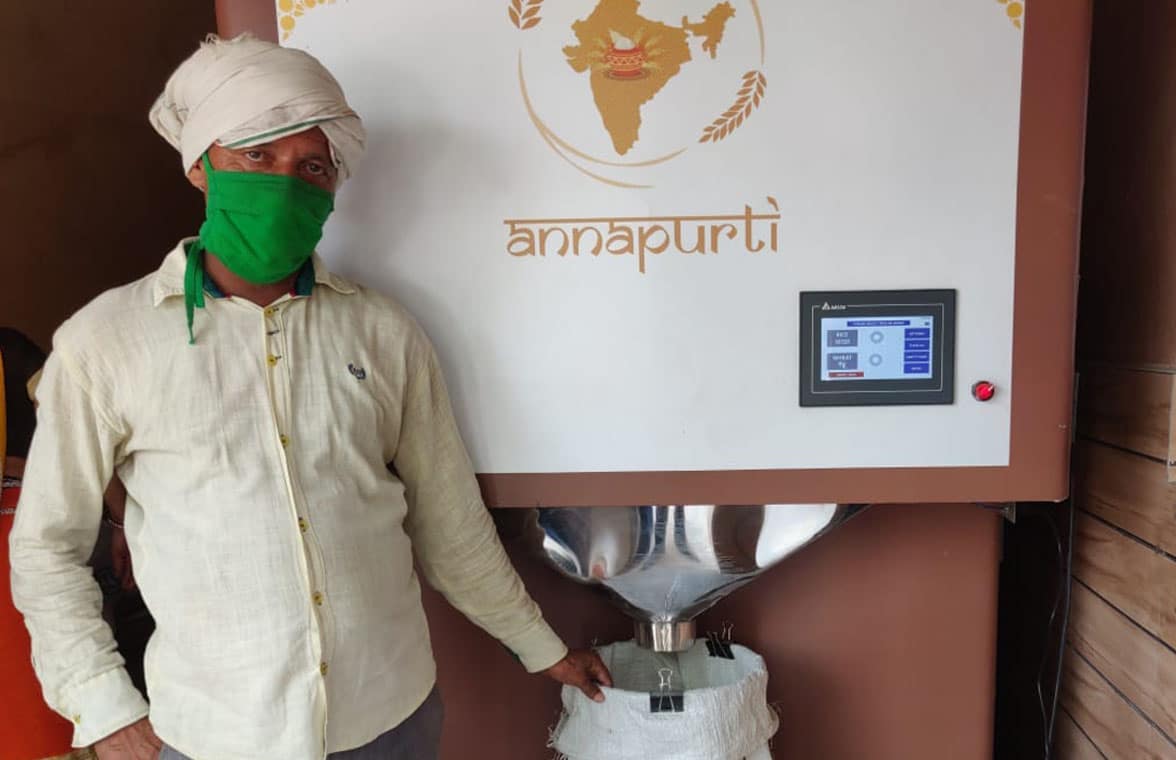
The United Nations World Food Programme (WFP) is piloting a new kind of automated, contactless store that uses biometric authentication to let those entitled to subsidised commodities such as rice, wheat and grains receive their allocation without needing to visit a traditional retail outlet.
The GrainATM — also known as Annapurti — ensures that users can receive their full allocated entitlement of a given commodity 24/7 and “has the potential to be used for food grain distribution during emergencies, increasing access to markets for smallholder farmers and food-based safety nets”, the WFP explains.
“For example, it can facilitate easy access to monthly subsidised grains available via India’s Public Distribution System (the world’s largest food-based safety net covering over 800 million people).”
The Government of India currently distributes subsidised grains through more than 500,000 Fair Price Shops across the country. The manual weighing and distribution of the allocations “is not without problems”, however, because “it requires the people receiving assistance to queue for long hours, there is a high possibility of grain spillage and waste, and may even lead to people not receiving their share of food assistance”, the WFP says.
WFP India developed the GrainATM to address these problems by using biometric technology to verify a beneficiary’s identity and providing them “with consistent access to their full food ration with speed and accuracy”.
Food security
“Annapurti dispenses one or two grain commodities, up to 50kg, in five minutes, with an error rate of 0.01%,” the WFP adds.
“The entire solution, including the volume of the storage unit, is modular or easily assembled and can be put together depending on the amount of space available.
“To ensure food security with efficient energy access, the machine has been designed to consume only 0.6W per hour. It can also be attached to solar panels, inverter batteries and elevators for automatic refilling.”
The GrainATM is one of five projects that received a WFP Innovation Award earlier this month. It is being tested in locations in the Indian states of Haryana and Odisha.
“The aim for GrainATM is to reach over 300,000 people by the end of 2022,” the WFP says.
Next: Visit the NFCW Expo to find new suppliers and solutions